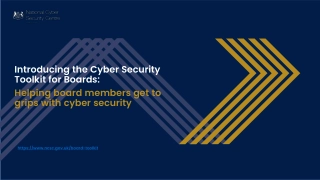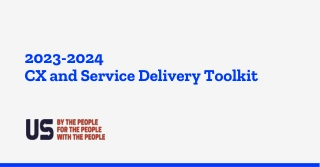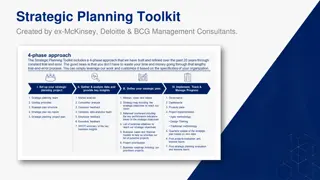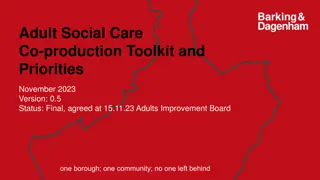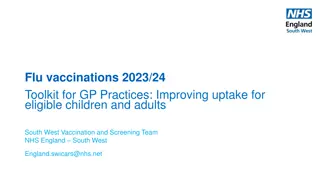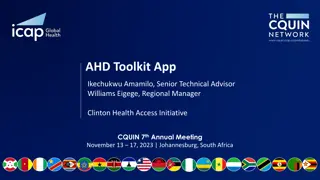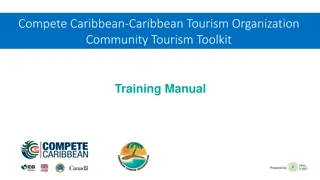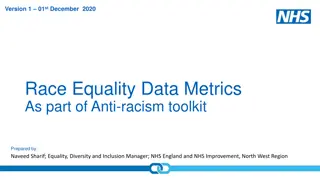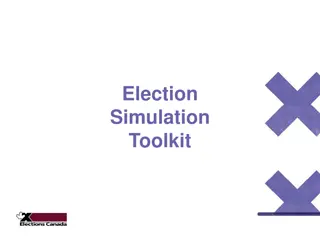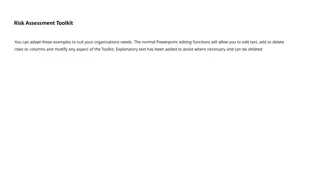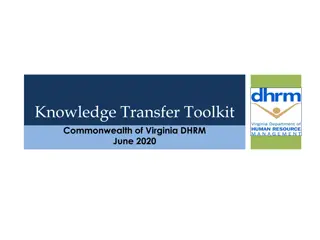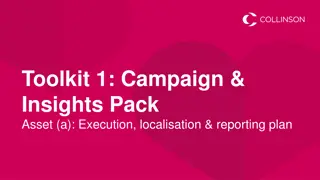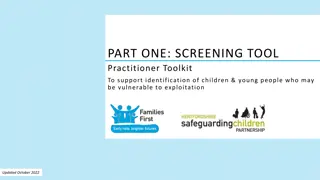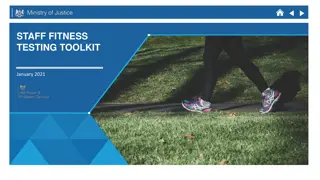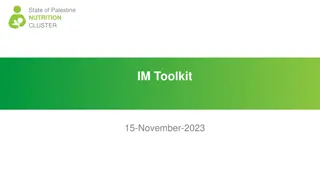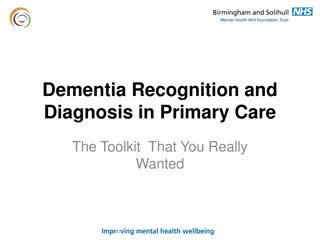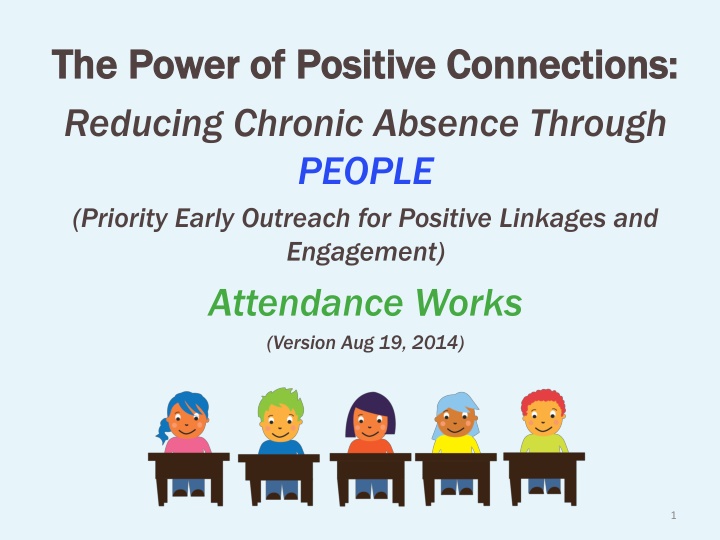
Positive Connections for Reducing Chronic Absence Through PEOPLE
Learn how to implement the PEOPLE strategy - Priority Early Outreach for Positive Linkages and Engagement - to reduce chronic absence in schools. Discover strategies, outreach methods, and implementation tips to engage at-risk students and their families effectively.
Download Presentation

Please find below an Image/Link to download the presentation.
The content on the website is provided AS IS for your information and personal use only. It may not be sold, licensed, or shared on other websites without obtaining consent from the author. If you encounter any issues during the download, it is possible that the publisher has removed the file from their server.
You are allowed to download the files provided on this website for personal or commercial use, subject to the condition that they are used lawfully. All files are the property of their respective owners.
The content on the website is provided AS IS for your information and personal use only. It may not be sold, licensed, or shared on other websites without obtaining consent from the author.
E N D
Presentation Transcript
The Power of Positive Connections: The Power of Positive Connections: Reducing Chronic Absence Through PEOPLE (Priority Early Outreach for Positive Linkages and Engagement) Attendance Works (Version Aug 19, 2014) 1
AW Recommended Site Level Strategies AW Recommended Site Level Strategies Leverage Strategies C and D to Adopt the PEOPLE Strategy Starting at the Beginning of the School Year 2
Priority Early Outreach for Positive Priority Early Outreach for Positive Linkages and Engagement ( Linkages and Engagement (PEOPLE PEOPLE) ) Priority: Focuses on at-risk students in grades, schools and neighborhoods with high levels of chronic absence Early: Begins with the start of school. Outreach: Connects to students and families Positive: Promotes preventive, supportive approaches rather than punitive responses Linkages Taps the full community for support Engagement: Motivates showing up to class & offers students & families a role in improving attendance.
Implementing Implementing PEOPLE (Priority Early Outreach for Positive Linkages and Engagement) (Priority Early Outreach for Positive Linkages and Engagement) PEOPLE 1 Determine where to begin PEOPLE using a data- driven approach 5 2 Establish a team to implement PEOPLE Reflect and celebrate celebrate 4 3 Connect students and families to positive supports Examine which students need PEOPLE 4
Identifying Where To Begin Identifying Where To Begin Implementation Implementation Low Income Students and High Levels of Chronic Absence School Leadership Supportive Community Partners Identifies Priority Schools, Neighborhoods or Grades within School to Begin Implementation 5
Use Data to Identify Where To Begin Implementation Within a District or School Proposed Criteria: Proposed Criteria: Significant number of low-income students Elevated chronic absence rates especially in transitional grades (e.g. K/1, 6th, 9th grades) School leadership committed to making attendance a priority and adopting recommended practices and working with priority outreach list Community partners that can help support the work 6
When to Begin Tier 1 When to Begin Tier 1 Summer Teacher Welcome: Teacher contacts family to welcome them to school, remind them of 1st day, and invite to Back to School celebration Back to School Celebration: Backpack giveaway, announce attendance incentives gather families living in same area to talk about coordinating getting to school Tier 1: Universal Community Partner Welcome: Staff member reminds family of first day of school, invites to community- led Back to School celebration(s) Back to School Neighborhood or Community Rally Tier 2: Early Outreach Tier 3: Intensive Intervention 7
For Tier 1: Leverage Our For Tier 1: Leverage Our Communication Resources Communication Resources Count Us In Toolkit: Count Us In Toolkit: http://awareness.attendanceworks.org/resources/toolkit/ Bringing Attendance Home Parent Video Bringing Attendance Home Parent Video: http://www.attendanceworks.org/tools/for- parents/bringing-attendance-home-video/ Bringing Attendance Home Toolkit: Bringing Attendance Home Toolkit: http://www.attendanceworks.org/tools/for- parents/bringing-attendance-home-toolkit/ Parent flyers: Parent flyers: http://www.attendanceworks.org/tools/for- parents/ 8
Criteria for Identifying Priority Criteria for Identifying Priority Students for Tier 2 Supports Students for Tier 2 Supports Chronic absence (missed 10% or more of school) in the prior year, assuming data is available. And/or during the beginning of the school year, student has: In first 2 weeks 2 absences In first month (4 weeks) 2-3 absences In first 2 months (8 weeks) 4 absences 9
Students Who Miss 2 or More Days of School in The First Students Who Miss 2 or More Days of School in The First Month of School Are Significantly More Likely to Be Month of School Are Significantly More Likely to Be Chronically Absent by the End of the School Year Chronically Absent by the End of the School Year Baltimore students who missed 2 missed 2- -4 days of school in of school in September were September were 5 times as likely 5 times as likely to be chronically to be chronically absent absent. . 100% Percent chronically absent at the end of the school year 90% 93% 88% 4 days 80% 78% 78% 76% 70% 60% 60% 50% 51% 50% 40% 45% 43% 30% Students who missed 5 or more missed 5 or more days of school in days of school in September were September were 16 times as likely 16 times as likely to be chronically to be chronically absent absent. . 20% 10% 15% 13% 13% 11% 9% 0% < 2 Days 2 to 4 Days > 4 Days
When to Begin Tier 2 When to Begin Tier 2 1st Day of School End of Week 1 Beg. of Week 2 End of Week 4 First Month of School School-Designed Attendance Ritual School-Designed Attendance Ritual Tier 1: Universal Community Partner-Designed Attendance Ritual School Staff Check-In: Personal contact if students exhibits chronic absence Share something positive @ child , offer help with barriers & connect to positive supports. Tier 2: Early Outreach Community Partner Staff Follow-Up: Staff follows up with families to help address barrier/offer support. Confidentiality agreement needed if data is shared. Tier 3: Intensive Intervention Attendance Team Meeting: Needed Infrastructure Supports and Training Include key community partner staff; decide which families need home visit and who will conduct it 11
Possible Tier 2 Interventions Possible Tier 2 Interventions Recruit for engaging Before- or After-School Activities Partner with families/students to develop Student Attendance Success Plan Connect to Walk- to-School Companion Assign Attendance Buddies Offer plan or contacts for Health Support Positive Linkages and Engagement for Students and Families 12
PEOPLE PEOPLE Supports A Cost Effective Tiered Supports A Cost Effective Tiered Approach to Improving Educational Outcomes Approach to Improving Educational Outcomes TIER 3 TIER 3 Students who missed 20% or more of the prior school year (severe chronic absence) High Cost Intensive case Intensive case management with management with coordination of coordination of public agency and legal agency and legal response as needed response as needed public TIER TIER 2 2 Students exhibiting chronic absence (missing 10%) Provide personalized early outreach Provide personalized early outreach Meet with student/family to develop plan Meet with student/family to develop plan Offer attendance Mentor/Buddy Offer attendance Mentor/Buddy TIER 1 TIER 1 All students at priority schools Recognize good and improved attendance Recognize good and improved attendance Educate & engage students and families Educate & engage students and families Monitor attendance data Monitor attendance data Clarify attendance expectations and goals Clarify attendance expectations and goals Establish positive and engaging school Establish positive and engaging school climate Low Cost climate 13
Who Can Help Advance a Who Can Help Advance a PEOPLE PEOPLE Approach? Approach? District Leaders Offer district support and data Identify and engage priority schools School Leaders PEOPLE PEOPLE Make attendance a priority Ensure implementation team and plan Community Partners Call for PEOPLE approach Link to community resources (health, afterschool, food, mentoring, family support, etc.) 14

